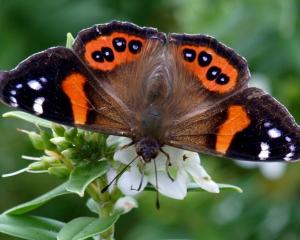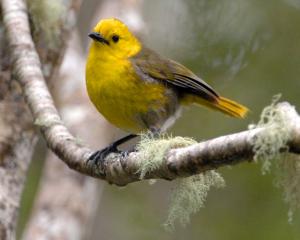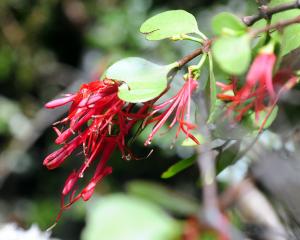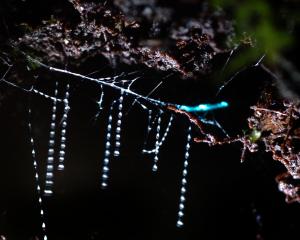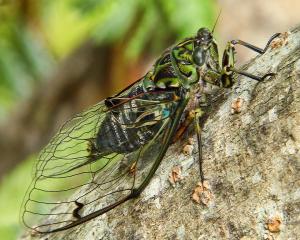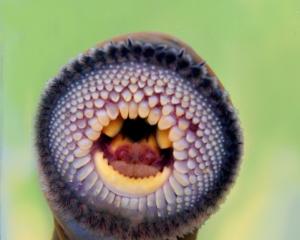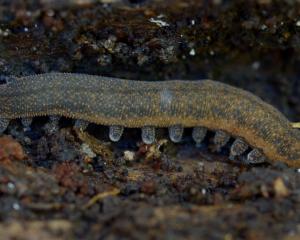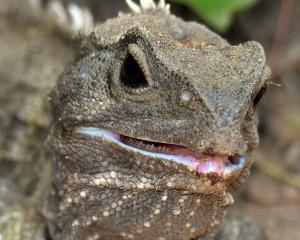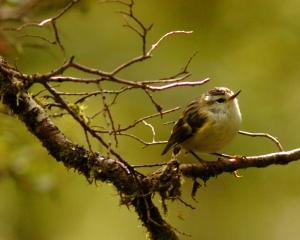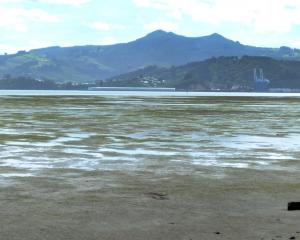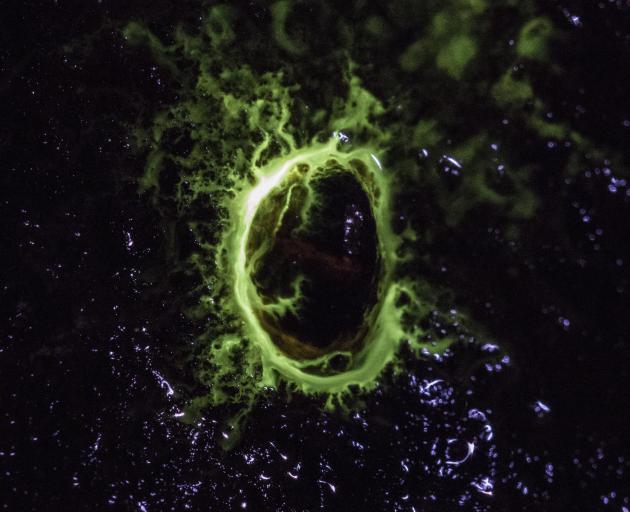
Although we heard their distinctive calls nearby, we were not successful in seeing this most iconic of our native species. Nevertheless, that very night we were able to find another taonga, an animal that exemplifies Aotearoa New Zealand’s globally important biodiversity: a glow-in-the-dark limpet, the worlds’ only bioluminescent freshwater snail.
Latia (pronounced ‘‘LAY-tee-uh’’) lives attached to the edges and undersides of rocks and boulders in clean, fast-flowing streams and rivers. But you do have to go north to observe it: there are no records from the South Island, although it is common in the Hutt River just north of Wellington.
You need a sharp eye to find Latia. Its shell is small, up to 11mm in maximum length (about the same as a standard staple), and a dull dark brown. Although they often occur in large numbers, Latia can look just like small lumps on their home rocks. After dark, however, they are more easily spotted, especially if disturbed, as they exude mucus with a brilliant greenish glow. No other mollusc has learnt this trick, but just what the function of this luminescence is, we do not know. There is speculation that it is a defence against predators, but how glowing mucus would prevent the limpet being eaten isn’t obvious. Indeed, we do not even know what eats Latia.
Not only is Latia restricted to the North Island, but it has no close kin overseas. The nearest relatives are very different-looking freshwater snails from Chile, Argentina, Uruguay and southern Brazil, members of a different family separated from Latia by more than 80 million years of evolution. Indeed, this timing suggests that Latia and its ancestors have been isolated in proto-New Zealand since the break-up of the giant southern supercontinent, Gondwana, during the Cretaceous period.
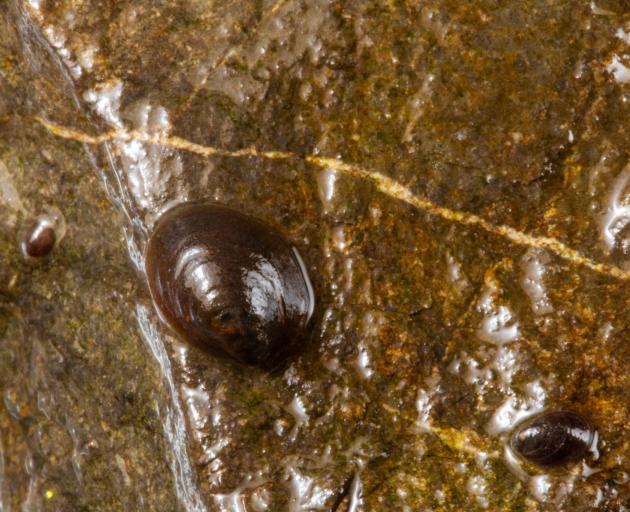
Another unresolved puzzle is why the current distribution of Latia is limited to the North Island, which was connected to the northern South Island only a few tens of thousands of years ago. This restriction became all the more surprising when an extinct species was found recently in Miocene fossil deposits near St Bathans in Central Otago. Latia manuherikia lived perhaps 20 million years ago, but why and when these limpets were exterminated from the South Island we may never know.
Healthy populations of Latia neritoides require clean water, free from too much silt or other pollution. Streams running through native bush, such as in the Waitakere Ranges west of Auckland, are prime habitat. Unfortunately, streams in heavily modified areas such as farmland and cities are less likely to have Latia today: such waterways are often full of mud and sand, or chemical pollutants.
Cleaning up our freshwater systems will have payoffs not just for swimming and drinking: some of our very special animals like Latia will also benefit. And surely we want to keep them so we can learn more about this mysterious taonga.
Hamish G. Spencer is sesquicentennial distinguished professor in the University of Otago department of zoology.

